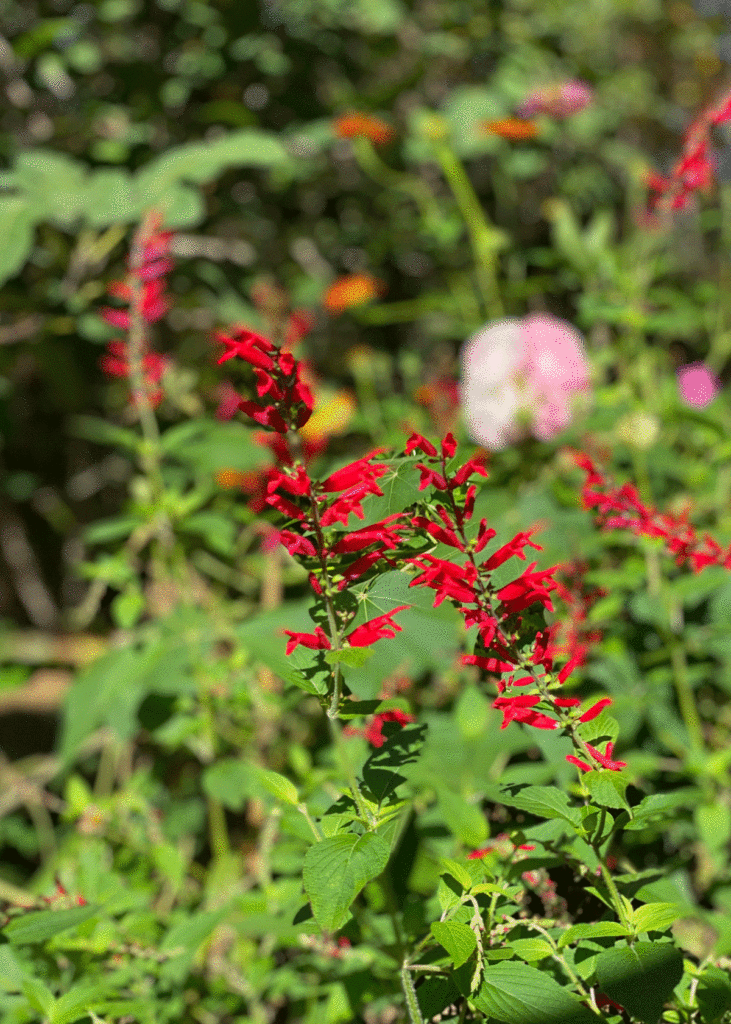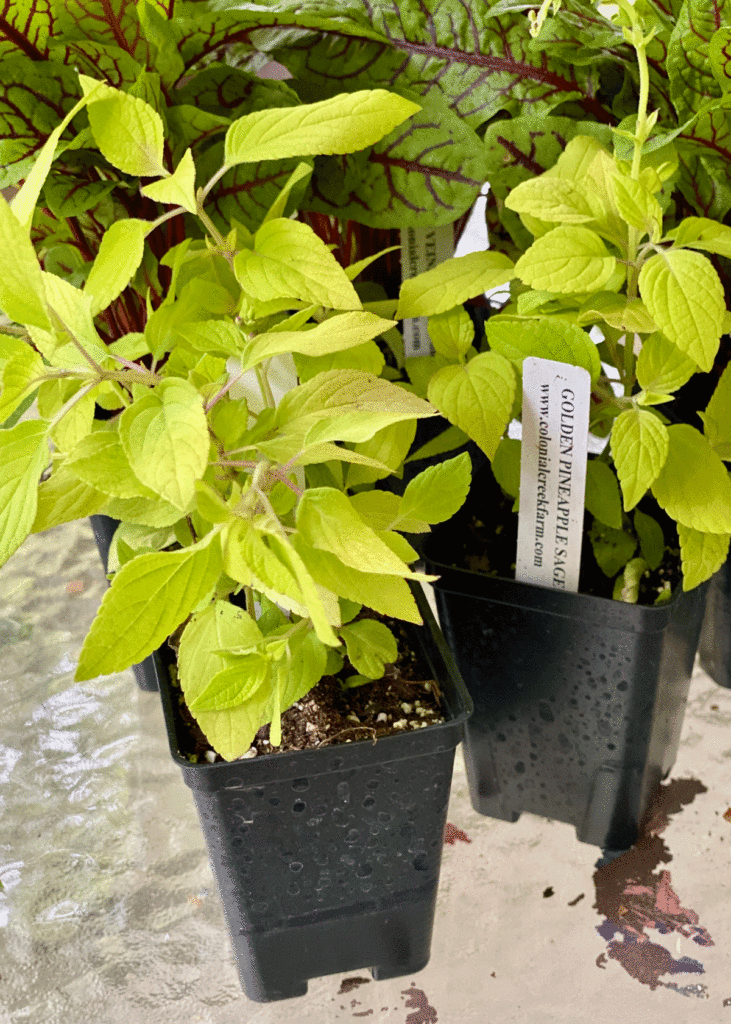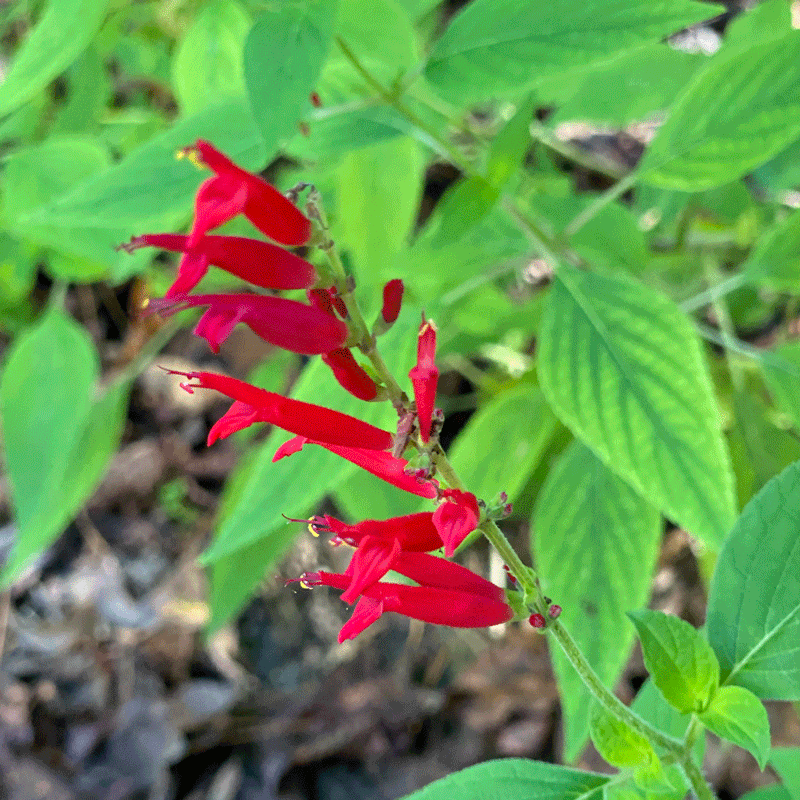Spring gardening is all about instant gratification, and who can blame us? We’ve been through a cold, dark season staring out our windows at landscapes cloaked in varying shades of brown. We want colorful flowers and we want them now.
I have a suggestion to make for your next trip to the Garden Center. As you’re filling your cart with instant-impact annuals like begonias and impatiens, head over to the herb display and look for pineapple sage seedlings and pick up a few for your summer garden. Pineapple sage is not here for instant gratification. It’s a small-ish herb seedling with soft leaves that smell slightly like pineapple. You may think that’s the reason you grow pineapple sage. While the fragrance is nice, the real reason. you plant pineapple sage is for the striking red flowers that emerge late in summer.
Grow Pineapple Sage in Full Sun

Pineapple sage is a ridiculously slow-growing plant. Most every year I plant it, I forget that it’s there until August. And that’s when I look at it and say, “it’s about time you did something like bloom, don’t you think?” I don’t think the plants really hear me, so it’s just coincidental, I’m sure, that pineapple sage starts flowering as September approaches. By this time, the 4-inch high seedlings have ballooned to 3-feet high and wide shrubs. It’s crazy. From September to our typical first frost in late October, pineapple sage sends up plumes of cardinal red flowers that beckon the hummingbirds to stop for the buffet on their southward migration.
In my zone 8a garden, I get the bonus of perennial pineapple sage. We’re on the northern edge of its hardiness zone, but so far pineapple sage returns for me each spring.
Plant Pineapple Sage in Spring for Late Summer Blooms

This spring, at the Cobb County Master Gardener’s Plant Sale, I bought 8 pineapple sage seedlings. That sounds extravagant, I know. My plan is to place them in my new full sun garden near the mailbox. I plan to move the seedlings to gallon sized pots for a month or so, then plant them in-ground. I envision a hedge of pineapple sage in September, beckoning the hummingbirds to pause and refresh on their way south.
Pineapple Sage in Your Garden
If you have a sunny spot with 6 to 8 hours of summer sunlight, plant pineapple sage. It grows well in large pots, but be sure to give it room to grow and keep it watered. Pineapple sage can be drought-tolerant and it will let you know when it’s ready for hydration. The leaves will flop over and you’ll be convinced you’ve killed the thing. Usually, a refreshing drink of water is enough to revive it.
You can harvest pineapple sage leaves and use them to make herbal teas. I like clipping the blooms and adding them to fall flower bouquets.
At the end of the season, leave pineapple sage stems and leaves for beneficial insect habitat. In colder zones, add compost and mulch to the base to protect it while it’s dormant during the winter. In early spring, cut back the branches and let the plant revive for a new season.
More Gardening Stories from A Cook and Her Books
Join the Conversation
Let’s talk about gardening and more on Instagram and Facebook. I’d love to hear from you!



Leave a Comment